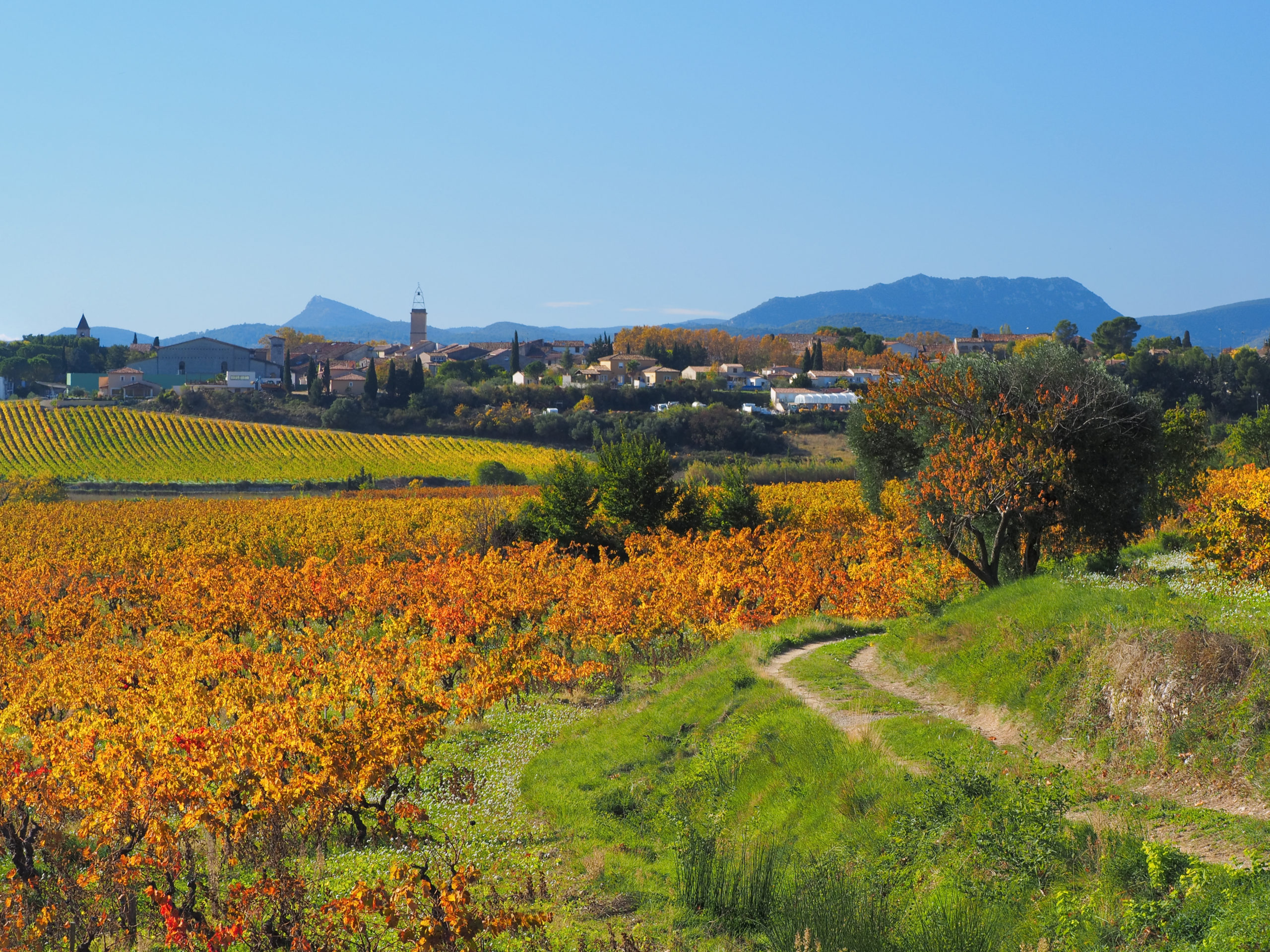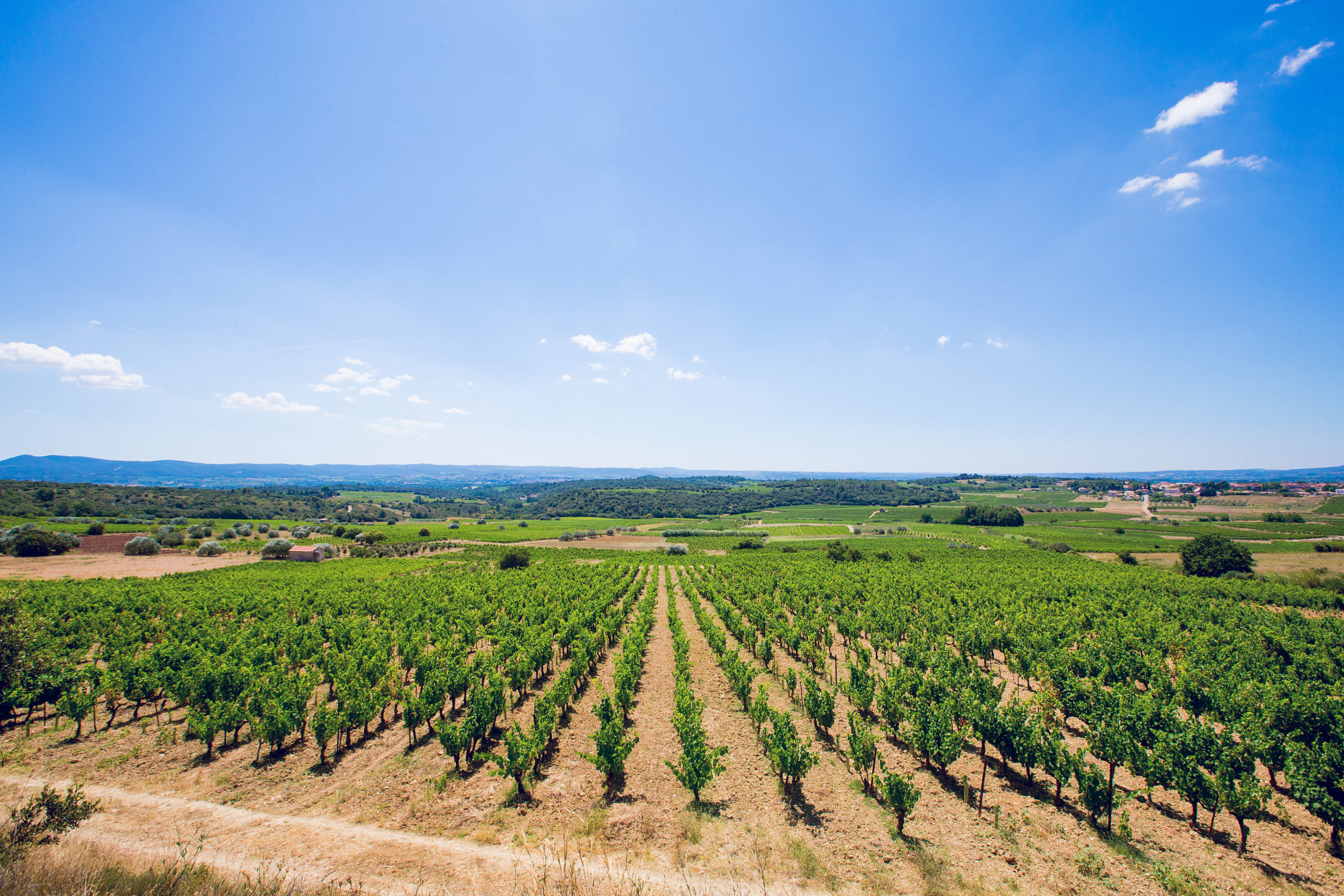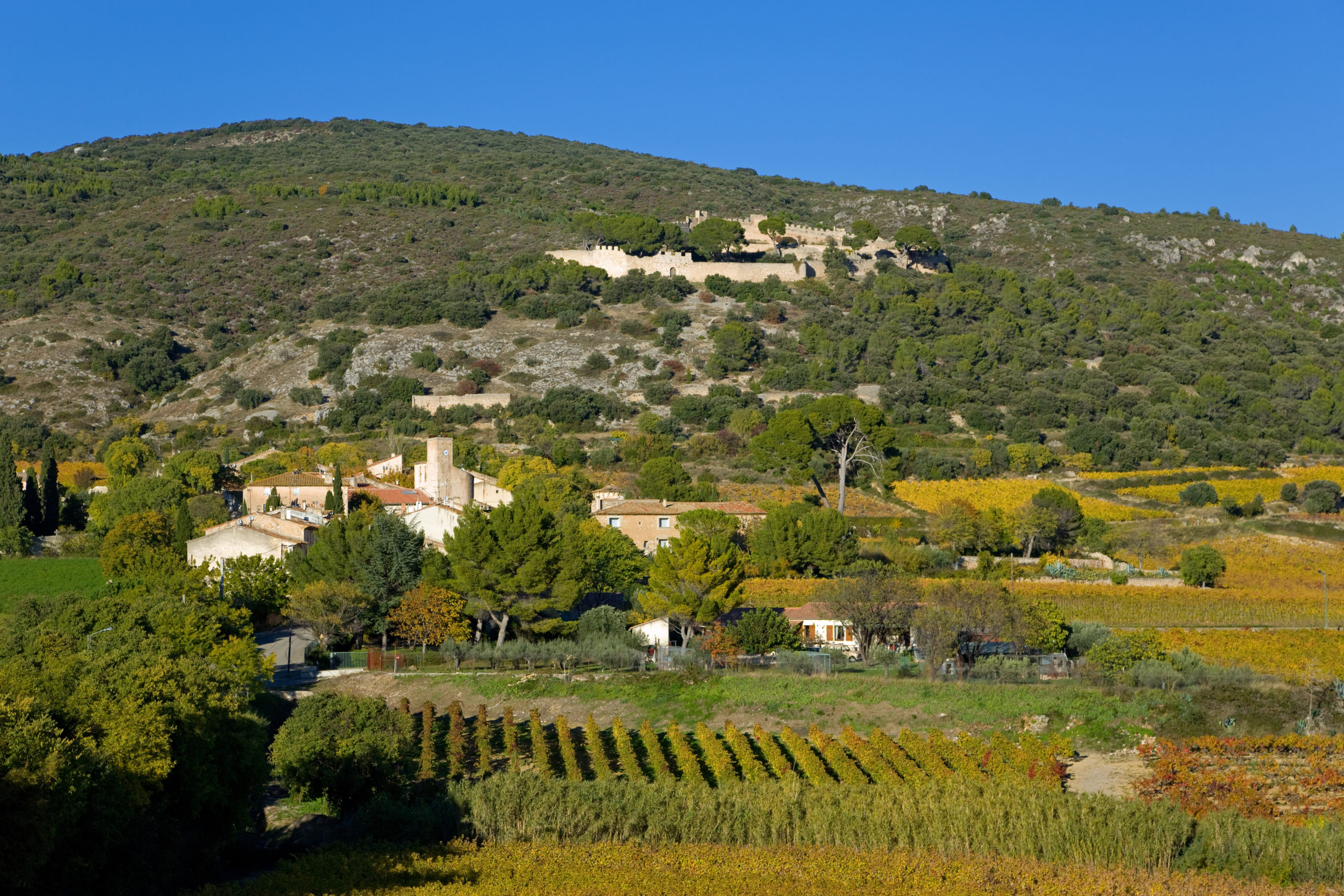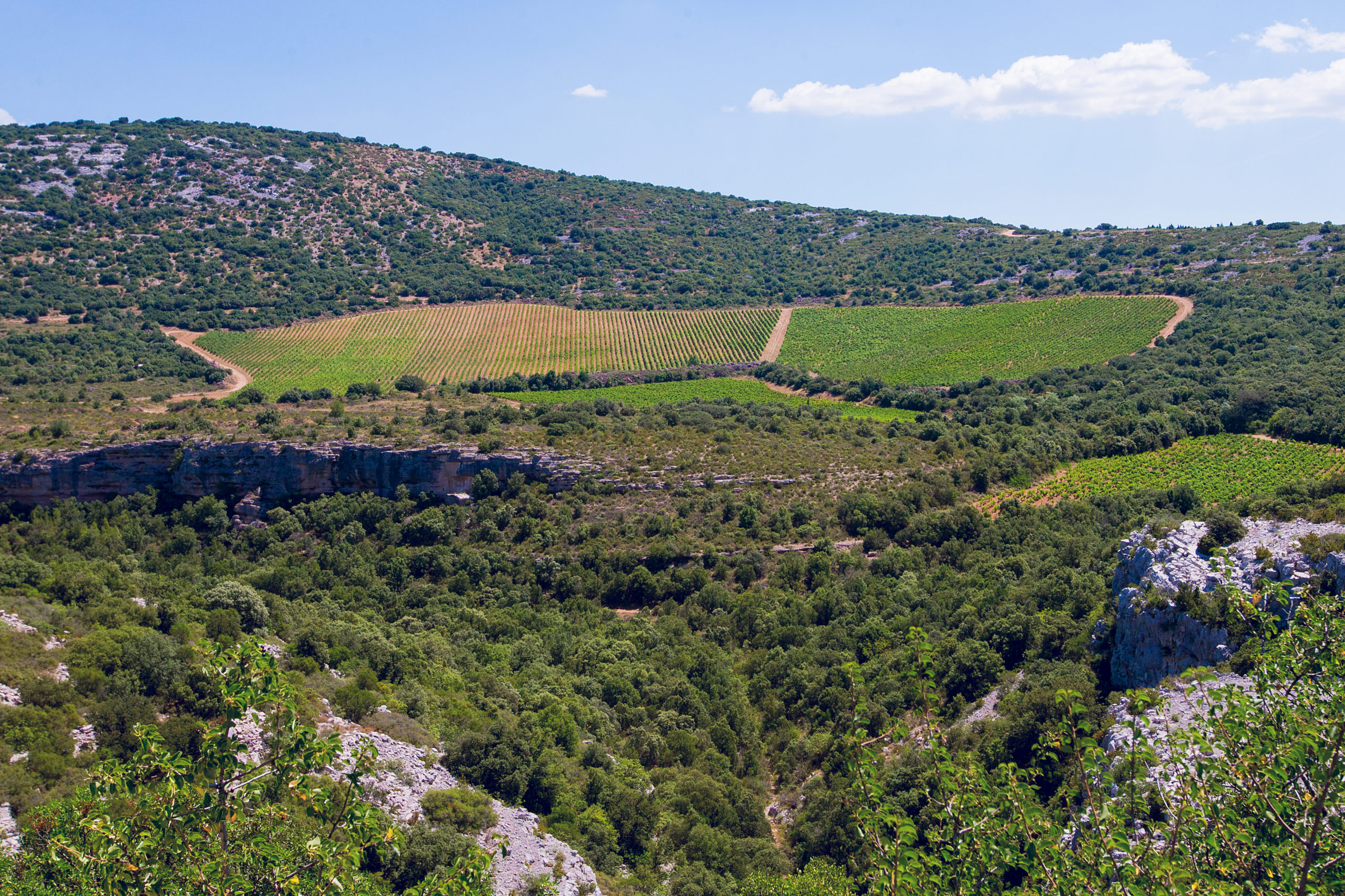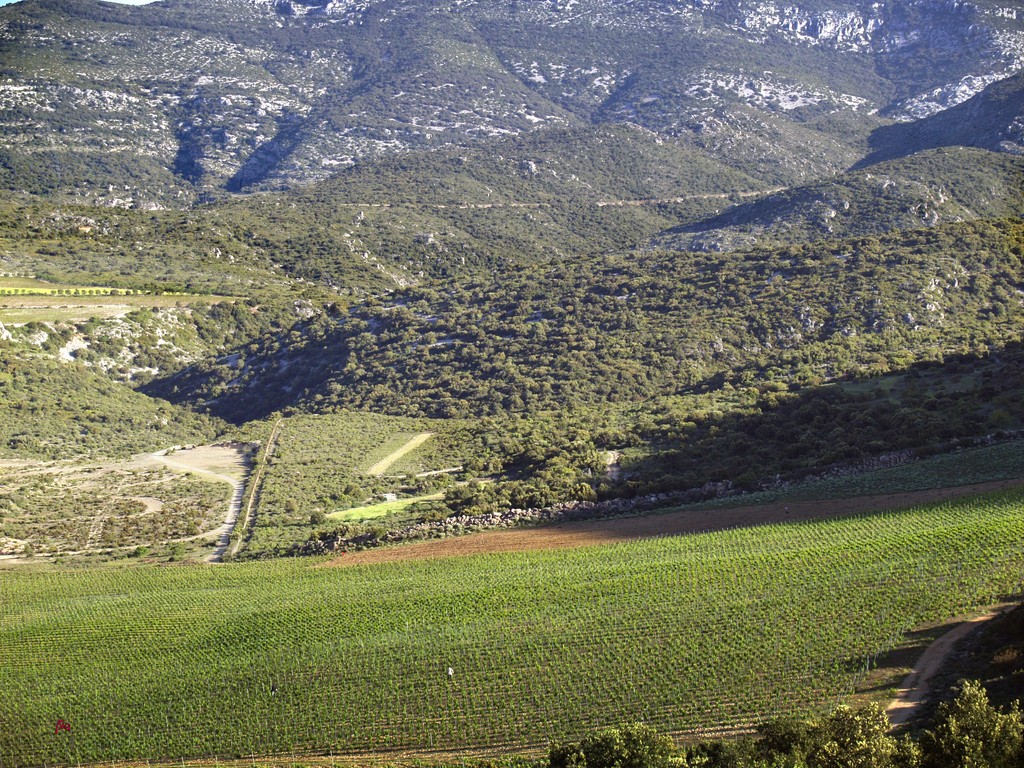LE TERROIR
AUPILHAC
The Terraces of Aupilhac
A surface area of 13.5 hectares, south facing, these parcels, composed of clay/ marl / chalk soil are situated below the « Chateau du Castellas », emblematic Montpeyroux monument dating from 11th century.
The terroir of Aupilhac is found on the edge of the garrigue with Holm oak, White oak, Arbutus ( Strawberry trees), Thyme, Broom, all the plants and trees of the mediterranean. Underground, numerous cavities and subterranean networks provide a regular moisture supply. Cette situation en Piémont donne une pluviométrie supérieure et une fraicheur estivale accentuée.
On this south-facing slope we have favoured the mediterranean cepages, well tried and tested for a long period of time. They give a good balance to the wine, since they don't suffer from the heat. They are planted in the soil and climatic conditions that suit them best. This terroir of Aupilhac was a revelation to me. Whilst tasting these first wines, I realised I wanted to pursue the experience as far as possible. The rustic cepages like the Carignan or Mourvèdre have been tamed. Ils arrivent à s'harmoniser à merveille, créant cette symphonie de vins, depuis 1989, qui émeuvent nos sens années après années, depuis 32 millésimes, en ce jour où nous venons de récolter la vendange 2020.
The Cepages : Mourvèdre ( 4.4 ha.), Carignan ( 3.6 ha), Syrah ( 1.2 ha), Grenache ( 1.1 ha), Cinsault ( 0.6 ha), and for the white wines, Carignan Blanc ( 0,9 ha), Clairette ( 0,6 ha), Grenache Gris (0,4 ha), Grenache Blanc, Vermentino and Ugni Blanc.
And if we continue our climb up the hill, past the Chatau du Castillas, we reach the crest and discover …
COCALIÈRES
The Amphitheatre of Cocalieres
10 hectares, 350m altitude - Les Cocalières -.
The most northern facing part is planted with 5 white cepages ( Roussanne, Marsanne, Vermentino, Clairette, Grenache Blanc )
The Grenache Noir, Syrah and Mourvèdre produce the Cocalières Rouge.
This magical place was created by a geological phenomenon, scarce in our region. An enormous volcanic eruption created this canyon that collected water during millions of years. Geologically called a 'MAAR', a lake in the crater of a volcano. Traces of Basalt are present, but limestone is dominant.
The altitude, also the orientation, mean the vines benefit from a certain freshness, unlike the other side of 'the mountain'where the Terrasses d'Aupilhac are found.
It is for this reason that the cepages such as Syrah, Grenache ( black or white) Roussanne, Marsanne are more successful than in a warmer climate.
The extraction of enormous rocks was undertaken so that, once planted, the vine could force its root system deep into the earth of the terroir to discover the gustative expression of fresh spices, of limestone mixing with the aromas of the garrigue plants that surround this amphitheatre.
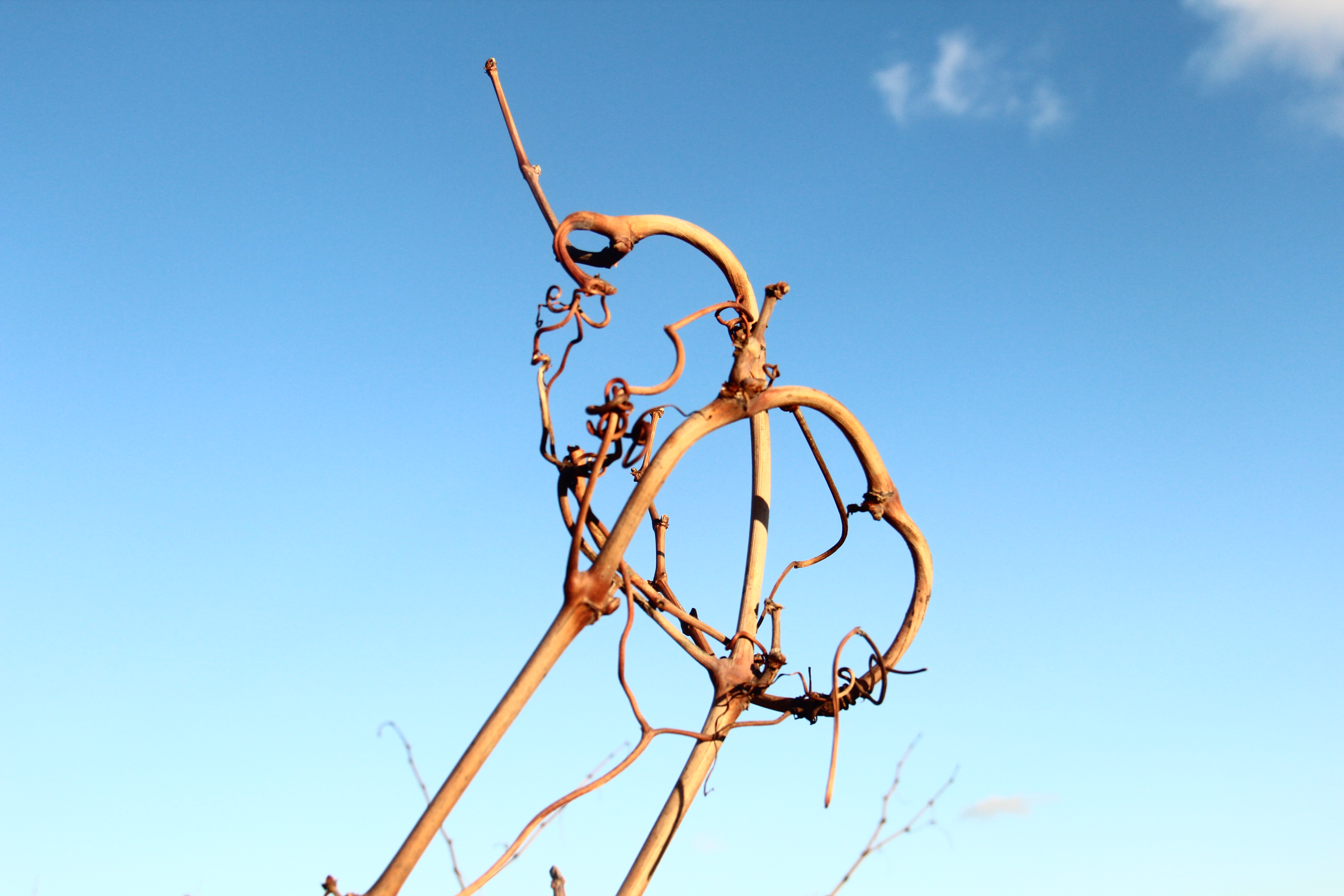
THE CLIMATE
At 40 Kms from the sea, we are in a Mediterranean Climate.
Hot summers, fresh winters and rainy autumn and spring.
In Montpeyroux, at the foot of 'the Plateau du Larzac' (up to 850m altitude)
we benefit from night coolness in summer and several storms that
envigorate the vines after the oppressive heat of the day.
LA PLANTATION
After grubbing up the vines, the soil is left to rest for about 8 years during which different cereals are sown. Chemical disinfection of the soil is never carried out.
The time of rest allows to clean naturally the earth. One year before planting, the soil is broken down with a Ripper to facilitate the implantation of the future vine. A soil analysis is carried out to make a pre-selection of the rootstocks.
The choice is always of a plant not very vigorous, not as productive often based on Riparia.
LA TAILLE
After the harvest, when autumn arrives, we spray a biodynamic preparation to prepare the vines for vegetative rest and to boost the return of sap to the heart of the stem and roots.
Pruning only begins in January, starting with the " Tardif " grape varieties. The early ripening grape varieties and the colder places are pruned later in March.
We practice Royat cords or spread cup pruning.
LES VENDANGES
Monitoring of the degree of maturity is set up for each plot in August.
At each passage:
- picking of about 100 berries to monitor changes in sugar content
- tasting of berries (pulp, skin, seeds).
- visual observation of pulp, seeds and stem.
Harvesting is done exclusively by hand.
Manual harvesting makes it possible to select the grapes, eliminating the rotten and less ripe.

